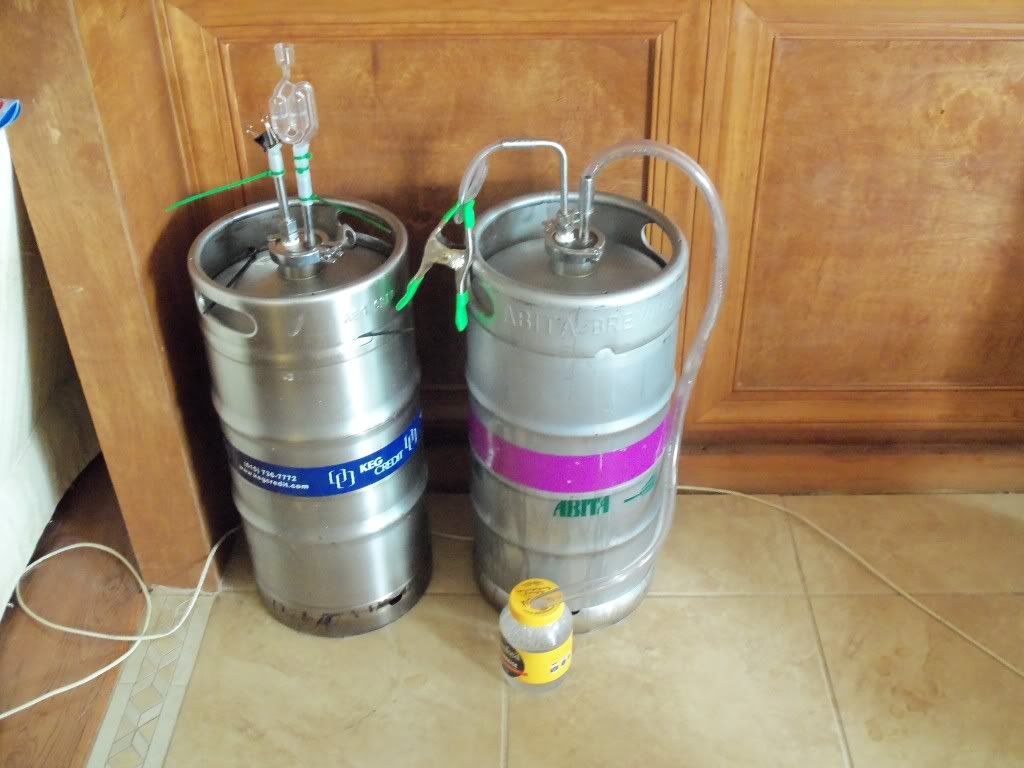MC,
I would like to thank you for a very detailed and well-documented (series of) post(s)! I have been reading a lot about yeast propagation, storage and handling and this is one of the more practical, "hands on" descriptions of the process that I have read.
I have "read" a great deal more than I have "done", but I am obsessed with sanitation when it comes to anything post-boil. I ferment in Sanke kegs that have been boiled with sanitizer in them and drained/covered. I transfer my wort directly from the boil kettle to the Sanke fermenter while the wort is @ a rolling boil, and let the Sanke cool (sealed) over night before pitching my yeast. (I pressurize the Sanke with O2 and shake it vigorously prior to pitching the yeast, and consider this step and the actual pitching of the yeast as the weakest links of sanitation in my process. ie the only time my wort has any ambient exposure.)
I am just starting with yeast "washing", "starters" and storage. I purchased one 1L Erlenmeyer Flask "starter kit" a few weeks back and have four more 1L and five 2L flasks + various stoppers on order.
(SIDE NOTE:
http://www.ArtistSupplySource.com has 1L bromex Flasks for $6.70 each and 2L Bromex Flasks for $9.10 each. Their shipping is high for one or two flasks (~$15), but does not increase much as quantities increase; all 9 flasks I ordered, with shipping totaled a few cents South of $100; $72.30 + $27.22 S&H = $99.52 . I thought that was a pretty good deal. Oddly, their prices on stoppers are quite high, so I ordered them elsewhere.)
I have been "practicing" by using small quantities of my pitching yeasts to create "mock starters". I go through the whole process then simply pour the "mock starter" down the drain on the next brew day. ( I am simply too worried about sanitation/contamination to trust my "mock starters" yet, but I am gaining confidence and almost ready to actually use one of them. To date I have had no "off smells" or any signs of contamination, in my "mock starters", so I am beginning to think I am on the right track.)
One question for you (or anyone else): I have been thinking I might be better-off harvesting yeast from my fermenter during active fermentation. This would be easy to achieve after ~day four of the fermentation process by simply pressurizing the Sanke "air tube" with CO2 and running some of the wort/cake up the racking cane through a sanitized hose into a flask. I am thinking at this time the yeast/cake would be full of very viable yeast, and the process should not endanger the fermenting wort as there would be no exposure to ambient. Does this sound like a reasonable plan?
This a picture of two of my fermenters:
One has a "blow-off tube" because it is "early in the process", the other has a bubbler because it is nearly done

. As you can see, attaching a CO2 tank to the "relief tube" would be trivial, and the racking arm is already "all the way down", so extracting yeast using CO2 ****should**** be easy and sanitary (at least that is my thought, but I am ASKING not telling).
Thank you again for these great posts, they have helped me build confidence.
Fish










































![Craft A Brew - Safale BE-256 Yeast - Fermentis - Belgian Ale Dry Yeast - For Belgian & Strong Ales - Ingredients for Home Brewing - Beer Making Supplies - [3 Pack]](https://m.media-amazon.com/images/I/51bcKEwQmWL._SL500_.jpg)















